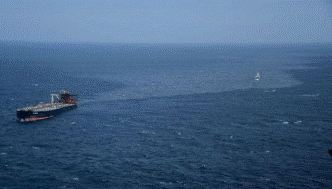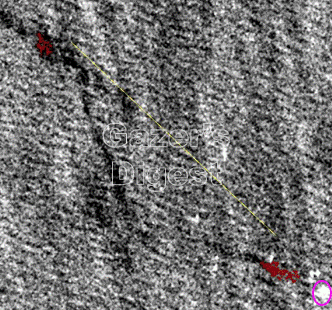
THE “NEW DIAMOND” HAD HOPED TO REACH THE DESTINATION PORT BUT FATE DECIDED OTHERWISE
(Sensing the tanker and the oil spills with Sentinel-1 SAR)
January 23, 2022

ESA's twin satellites, Copernicus Sentinel-1A and Sentinel-1B have been orbiting the Earth as usual, since 2016. The New Diamond, the 330-meter giant tanker, was carrying crude oil. It was navigating in the exclusive economic zone of Sri Lanka. Everything was going smoothly until a sudden event stopped the tanker from reaching its destination.

A very bad fire broke out suddenly in the tanker. The 330-meter giant tanker belongs to the very large crude carrier (VLCC) category. The crude oil tankers under the VLCC category are powered by very large diesel engines. The VLCC can transport 2 million barrels of crude oil. It also needs to carry a large quantity of fuel that burns to force the tanker to move forward.

Several naval ships had been deployed to control the fire. The fire was put out.
A few days later, the second fire erupted. The second fire was extinguished. However, the fires had caused a lot of damage to the engine room. The fire-damaged engine room left this very large tanker powerless. The ocean began to control the powerless supertanker. The crude oil tanker was drifting towards Sri Lanka's east coast. An oil patch on the sea became large and readily visible.
12 September 2020; ESA Copernicus Sentinel-1A satellite passed over the ocean where the incident happened. While it was moving in its orbit the satellite had scanned the Earth as usual. On the same day, the SAR data was sent back to earth, and within a short time, the data ingestion was done.
The SAR on the satellite had sensed the “New Diamond” tanker and the oil spills.

Home | Contact: info@gazersdigest.com
© 2020-2025 Gazer’s Digest is an information sharing platform. Gazer’s Digest includes topics, thought to be useful for the readers.